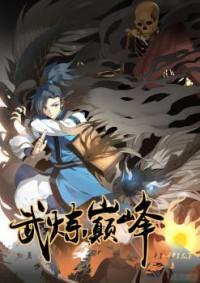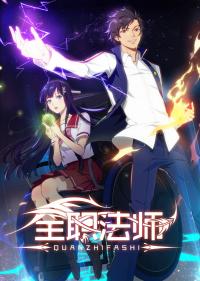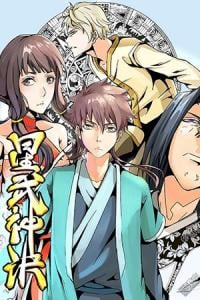5.0
7 votes
|
|||||
Information
Author(s):
Deep Black
Language:
English
Genres:
Adventure
, Fantasy
, Shounen
, Webtoons
Latest chapters more
-
I'll Resign and Have a Fresh Start in This World Ch.06850Dec 31, 2023
-
I'll Resign and Have a Fresh Start in This World Ch.06757Dec 07, 2023
-
I'll Resign and Have a Fresh Start in This World Ch.06651Dec 07, 2023
-
I'll Resign and Have a Fresh Start in This World Ch.06550Dec 07, 2023
-
I'll Resign and Have a Fresh Start in This World Ch.06476Nov 18, 2023
|
5.0
7 votes
|
|
|||||
Genres:
Synopsis
Post more
|
|
travelraval
Dec 26, 2022
|
It has several different types of beaches, salt flats, deserts, lakes, woods, and the world-famous Andes Mountains and Amazon Rainforest. It also features both large cities and little villages. Peru is home to delectable dishes, fascinating fauna, kind and welcoming people, and a fascinating past. You may be asking, then, if you're thinking of taking a trip to Peru in the near future, what time of year is ideal. In this piece, I'll discuss when it is best time to visit Peru. I'll also talk about the greatest areas to go and the best places to find a work exchange in Peru.
Source :- https://travelraval.com/blog/best-time-to-visit-peru/
Source :- https://travelraval.com/blog/best-time-to-visit-peru/
|
|
sourceessay12
Mar 15, 2023
|
Why Should You Pursue a Career in Data Science? (Career in Data Science, dissertation writing service, thesis help , assignment help Online)
https://sourceessay.com/plagiarsim-free-academic-essay-at-sourceessay/mba-essay-writing-help/
mba essay writing help edmonton
Data scientists will continue to be in high demand. Why is this taking place? What's behind this sudden increase in demand? We'll look at the reasons why a career in data science appears to be one of the most promising for years to come in this piece. Data science is in vogue. If you're wondering why it's one of the most promising job choices open to grads today, keep reading to learn the seven explanations.
Data science is a young and expanding subject that combines computer expertise with analytical thinking and statistical understanding. One may use their education, professional experience, and talents in a job in data science to take advantage of the staggering amounts of data that are constantly being mined and gathered from various sources.
This has prompted many to assert that people who are knowledgeable in data science are well-positioned for success in the modern world.
In light of the current growth and popularity of data science occupations, prospective data scientists may be asking themselves, "Should I Become a Data Scientist?
This essay examines seven factors that should influence your decision to work in data science.
Data science careers provide job stability
Imagine having a job that is secure and allowing you to utilise cutting-edge technology every day. There aren't many jobs in today's market that can make such grand claims. Due to technological improvements, many occupations have become obsolete; nevertheless, the field of data science is blooming with demand and will continue to grow at an accelerating rate.
The fact that data scientists may use their expertise in a variety of sectors and businesses explains in part why this is true. There are several chances open for you, whether you're interested in working in healthcare, government, or business consulting. Students can now avail dissertation writing service from SourceEssay.
In addition, businesses want their staff to keep up-to-date on new technology so they can better meet client expectations. As a result, most employers provide training opportunities to staff members who desire them (which means more money).
Another advantage is that companies typically offer great retirement plans within 3 years, which means less stress about saving enough money for retirement later on down the road when income may not be as high. In contrast, in other industries, employees must leave their employer after 5 years in order to receive retirement benefits like 401(k).
Data scientists are highly sought-after.
It is evident that there is a significant need for data scientists.
According to the Bureau of Labour Statistics, there are more jobs available than qualified candidates, and incomes are high.
Data science has become one of the most sought-after professional paths in technology, according to TechRepublic. It's simple to see why data science has been a leader in the field for so long: It pays well, offers a wide range of career possibilities at prestigious firms all over the world, and enables experts to work on complex issues that have an impact on actual people. Students can now avail thesis help from SourceEssay professionals.
You can better comprehend the world around you thanks to data science.
A crucial tool for comprehending your surroundings is data science. We can observe and report on a lot of things in the world, but we don't really comprehend what they mean. By giving context that may be utilised to create inferences or develop insights, data science aids in our ability to make sense of observations. You can now take assignment help Online from SourceEssay experts.
Data science is essential for developing models or generating predictions that are beneficial for comprehending cause-and-effect relationships between variables (variables are measurable quantities).
By taking lessons from past experience and applying them to new circumstances, data science aims to provide answers to questions about why things occur and how they interact.
For instance, if a certain marketing campaign you did last year helped your firm develop over time, but this year's sales are slightly down from last year's, you'd need data science tools to figure out what went wrong so you can take action right away to replicate your last year's success.
One of the motivations for choosing a job in data science is to assist others.
Helping people is a terrific approach to use data science. Data science may be applied to better company operations, support education, and combat illness. For instance, it has been applied in medicine to estimate a patient's risk of heart disease depending on their lifestyle. It has also been used to assess instructors' effectiveness in the classroom by looking at the grades of their pupils and other data pertaining to their instructional skills.
Empathy and social responsibility are necessary for data scientists to flourish in this position. They should possess both technical skills, such as coding and data modelling, and strong analytical abilities in order to effectively find solutions to a variety of problems. This will allow them to use these solutions to solve real-world issues that are currently being faced by many different companies around the world.
Examine different positions in Career in Data Science
There is a growing need for experts who can transform raw data into useful insights as data becomes more widely available and more individuals have access to sophisticated computer equipment. This desire has encouraged the expansion of businesses like Google and Facebook that are experts at gathering and analysing massive volumes of data.
Teams of data scientists are employed by these businesses to study this data in addition to internal company data sources like consumer purchase histories or staff performance evaluations.
Conclusion
Data Science is not only a profitable career option, but it's also enjoyable. Although there are many technical difficulties and steep learning curves in the profession, it's vital to keep in mind that data scientists work with more than simply statistics.
In fact, many facets of the profession entail pursuing novel perspectives and discovering fresh angles from which to see the world. Using data science as a tool for social good is an excellent example. In this situation, you'll apply your knowledge of statistics and computer science to assist businesses like Google in solving some of the most pressing issues we face today, like homelessness, climate change, educational disparity, and more!
https://sourceessay.com/plagiarsim-free-academic-essay-at-sourceessay/mba-essay-writing-help/
mba essay writing help edmonton
Data scientists will continue to be in high demand. Why is this taking place? What's behind this sudden increase in demand? We'll look at the reasons why a career in data science appears to be one of the most promising for years to come in this piece. Data science is in vogue. If you're wondering why it's one of the most promising job choices open to grads today, keep reading to learn the seven explanations.
Data science is a young and expanding subject that combines computer expertise with analytical thinking and statistical understanding. One may use their education, professional experience, and talents in a job in data science to take advantage of the staggering amounts of data that are constantly being mined and gathered from various sources.
This has prompted many to assert that people who are knowledgeable in data science are well-positioned for success in the modern world.
In light of the current growth and popularity of data science occupations, prospective data scientists may be asking themselves, "Should I Become a Data Scientist?
This essay examines seven factors that should influence your decision to work in data science.
Data science careers provide job stability
Imagine having a job that is secure and allowing you to utilise cutting-edge technology every day. There aren't many jobs in today's market that can make such grand claims. Due to technological improvements, many occupations have become obsolete; nevertheless, the field of data science is blooming with demand and will continue to grow at an accelerating rate.
The fact that data scientists may use their expertise in a variety of sectors and businesses explains in part why this is true. There are several chances open for you, whether you're interested in working in healthcare, government, or business consulting. Students can now avail dissertation writing service from SourceEssay.
In addition, businesses want their staff to keep up-to-date on new technology so they can better meet client expectations. As a result, most employers provide training opportunities to staff members who desire them (which means more money).
Another advantage is that companies typically offer great retirement plans within 3 years, which means less stress about saving enough money for retirement later on down the road when income may not be as high. In contrast, in other industries, employees must leave their employer after 5 years in order to receive retirement benefits like 401(k).
Data scientists are highly sought-after.
It is evident that there is a significant need for data scientists.
According to the Bureau of Labour Statistics, there are more jobs available than qualified candidates, and incomes are high.
Data science has become one of the most sought-after professional paths in technology, according to TechRepublic. It's simple to see why data science has been a leader in the field for so long: It pays well, offers a wide range of career possibilities at prestigious firms all over the world, and enables experts to work on complex issues that have an impact on actual people. Students can now avail thesis help from SourceEssay professionals.
You can better comprehend the world around you thanks to data science.
A crucial tool for comprehending your surroundings is data science. We can observe and report on a lot of things in the world, but we don't really comprehend what they mean. By giving context that may be utilised to create inferences or develop insights, data science aids in our ability to make sense of observations. You can now take assignment help Online from SourceEssay experts.
Data science is essential for developing models or generating predictions that are beneficial for comprehending cause-and-effect relationships between variables (variables are measurable quantities).
By taking lessons from past experience and applying them to new circumstances, data science aims to provide answers to questions about why things occur and how they interact.
For instance, if a certain marketing campaign you did last year helped your firm develop over time, but this year's sales are slightly down from last year's, you'd need data science tools to figure out what went wrong so you can take action right away to replicate your last year's success.
One of the motivations for choosing a job in data science is to assist others.
Helping people is a terrific approach to use data science. Data science may be applied to better company operations, support education, and combat illness. For instance, it has been applied in medicine to estimate a patient's risk of heart disease depending on their lifestyle. It has also been used to assess instructors' effectiveness in the classroom by looking at the grades of their pupils and other data pertaining to their instructional skills.
Empathy and social responsibility are necessary for data scientists to flourish in this position. They should possess both technical skills, such as coding and data modelling, and strong analytical abilities in order to effectively find solutions to a variety of problems. This will allow them to use these solutions to solve real-world issues that are currently being faced by many different companies around the world.
Examine different positions in Career in Data Science
There is a growing need for experts who can transform raw data into useful insights as data becomes more widely available and more individuals have access to sophisticated computer equipment. This desire has encouraged the expansion of businesses like Google and Facebook that are experts at gathering and analysing massive volumes of data.
Teams of data scientists are employed by these businesses to study this data in addition to internal company data sources like consumer purchase histories or staff performance evaluations.
Conclusion
Data Science is not only a profitable career option, but it's also enjoyable. Although there are many technical difficulties and steep learning curves in the profession, it's vital to keep in mind that data scientists work with more than simply statistics.
In fact, many facets of the profession entail pursuing novel perspectives and discovering fresh angles from which to see the world. Using data science as a tool for social good is an excellent example. In this situation, you'll apply your knowledge of statistics and computer science to assist businesses like Google in solving some of the most pressing issues we face today, like homelessness, climate change, educational disparity, and more!
 |
bestreviewhk
Sep 17, 2022
|
The most convenient best bread maker for a busy life!
This 9 best bread maker are a great choice for your life. See you now!
#kitchen #home #bestreviewshk #breadmaker #bestbreadmaker
The most convenient best bread maker for a busy life!
What is the best bread maker?
Bread is one of the most popular and common types of bread that is eaten all around the world. The process of making bread can take up a lot of time and effort. Therefore, many people prefer to use a best bread maker instead. A bread maker uses dough hooks to knead dough, which is then placed in a baking pan for baking. The baking pan usually contains a non-stick coating or cooking spray so that the bread doesn't stick to it when it's being baked.
A bread maker is a kitchen appliance that bakes bread. It is used to mix, knead, and bake the dough into a loaf of bread. These appliances are also called automatic bread makers or even just bread machines.
There are many different types of bread makers available on the market, and each has its own pros and cons. The best bread maker is the one that suits your needs and does all the kneading and baking for you, so it’s an easy way to make fresh, homemade bread without the mess.
Source: https://bestreviewshk.com/best-bread-maker/
Buying guide
In order to make an informed decision, it is important to know what you are looking for in a bread maker. There are many different features to consider when buying a bread maker. Here are some things to look for while shopping for the perfect machine.
Design
A well-built bread machine should have a sturdy exterior, you don't need something that looks cheap and flimsy. Choose a durable design and a machine that has a long warranty. The size, shape, color, and materials of a bread maker all play a role in its usability. Look at what features you need first before making a decision. Do you need adjustable knobs? Does it have an LCD display screen? Are buttons located conveniently? Take note of these considerations to make sure they fit well in your kitchen.
Material
Look at the materials your bread maker uses. Plastic models tend to be cheaper than stainless steel ones, however, plastic-bodied bread makers may not last longer. A stainless steel model means no chipping and cracking that can occur over time. When choosing between glass and ceramic, look at how thick the top is. Glass is thicker but less sturdy; while ceramic is thinner and stronger. Choose the right type of materials for the product you want to purchase.
Size
The bigger the size of the bread maker, the more options you have. If you're looking for a smaller bread maker, then choose between single-function models or ones that double as mixers. In addition, a larger bread maker will be able to hold more ingredients, produce more loaves per batch, and will provide more room for storing ingredients.
Power
There's nothing worse than having to wait 20 minutes just to make some basic bread. In addition, sometimes the bread maker doesn't seem to work. A poorly functioning machine might feel like it's working fine but still won't produce a loaf of bread. That sounds really bad! However, if the machine isn't producing any errors then you know you've got a good one. Look for a model that has a powerful motor. The stronger the motor, the faster it will cook the dough.
Price
The amount of money spent on a bread maker varies greatly depending on who makes it and where. A good model can start at $200 while a high-end model could cost over $1000. However, if you plan on making only one loaf per day, then you may get away with spending less than the average price of $400-$500. If you plan to make several loaves each week, investing a little more may save you a lot later.
Source: https://bestreviewshk.com/best-bread-maker/
This 9 best bread maker are a great choice for your life. See you now!
#kitchen #home #bestreviewshk #breadmaker #bestbreadmaker
The most convenient best bread maker for a busy life!
What is the best bread maker?
Bread is one of the most popular and common types of bread that is eaten all around the world. The process of making bread can take up a lot of time and effort. Therefore, many people prefer to use a best bread maker instead. A bread maker uses dough hooks to knead dough, which is then placed in a baking pan for baking. The baking pan usually contains a non-stick coating or cooking spray so that the bread doesn't stick to it when it's being baked.
A bread maker is a kitchen appliance that bakes bread. It is used to mix, knead, and bake the dough into a loaf of bread. These appliances are also called automatic bread makers or even just bread machines.
There are many different types of bread makers available on the market, and each has its own pros and cons. The best bread maker is the one that suits your needs and does all the kneading and baking for you, so it’s an easy way to make fresh, homemade bread without the mess.
Source: https://bestreviewshk.com/best-bread-maker/
Buying guide
In order to make an informed decision, it is important to know what you are looking for in a bread maker. There are many different features to consider when buying a bread maker. Here are some things to look for while shopping for the perfect machine.
Design
A well-built bread machine should have a sturdy exterior, you don't need something that looks cheap and flimsy. Choose a durable design and a machine that has a long warranty. The size, shape, color, and materials of a bread maker all play a role in its usability. Look at what features you need first before making a decision. Do you need adjustable knobs? Does it have an LCD display screen? Are buttons located conveniently? Take note of these considerations to make sure they fit well in your kitchen.
Material
Look at the materials your bread maker uses. Plastic models tend to be cheaper than stainless steel ones, however, plastic-bodied bread makers may not last longer. A stainless steel model means no chipping and cracking that can occur over time. When choosing between glass and ceramic, look at how thick the top is. Glass is thicker but less sturdy; while ceramic is thinner and stronger. Choose the right type of materials for the product you want to purchase.
Size
The bigger the size of the bread maker, the more options you have. If you're looking for a smaller bread maker, then choose between single-function models or ones that double as mixers. In addition, a larger bread maker will be able to hold more ingredients, produce more loaves per batch, and will provide more room for storing ingredients.
Power
There's nothing worse than having to wait 20 minutes just to make some basic bread. In addition, sometimes the bread maker doesn't seem to work. A poorly functioning machine might feel like it's working fine but still won't produce a loaf of bread. That sounds really bad! However, if the machine isn't producing any errors then you know you've got a good one. Look for a model that has a powerful motor. The stronger the motor, the faster it will cook the dough.
Price
The amount of money spent on a bread maker varies greatly depending on who makes it and where. A good model can start at $200 while a high-end model could cost over $1000. However, if you plan on making only one loaf per day, then you may get away with spending less than the average price of $400-$500. If you plan to make several loaves each week, investing a little more may save you a lot later.
Source: https://bestreviewshk.com/best-bread-maker/
|
|
Alex Andey
Oct 14, 2022
|
Download Unlimited mp3 Videos And Converter For Free
Introduction
There is a lot of music in the world, but not all of it can be heard by everyone. Hats why the mp3 videos downloader and converter for free are paid come to save the music and other videos downloader converter are come into to play to save videos files to use them offline in any time so i want to introduce the mp3 downloader and Converter which have solve these problem.
:Convert YouTube Videos To Mp3 And Download
YouTube is the largest video sharing site in the world, but it's not just for watching videos anymore. You can use it to convert your favorite YouTube videos into mp3 format with this free converter tool. To do so, all you need is a computer or laptop that has internet have the good mp3 downloader & Converter.You do not have logged in, click 'Download' under 'Downloads' on the left side of your screen and choose 'YouTube MP3s'. Then click ‘Download’ again at any time if you want another file from this list (this will be saved automatically).
You can easily convert YouTube videos to mp3 and download then simply by pasting the URL into the input field.
You can easily convert YouTube videos to mp3 and download then simply by pasting the URL into the input field with the OnlyMp3 is a free service to use.
You have to paste the URL of the video you want to download, and click on convert button. After that, wait for a moment until it finishes converting your file. Once it's done, click on download button or choose from any format according to your choice!
Auto Fetch from YouTube
If you want to convert YouTube videos into MP3 files, Auto Fetch from YouTube is the best way to do it. The service does everything for you and doesn't require any manual work from your end. All you need is a valid YouTube account with access to the video library of your choice, which will be fetched and converted automatically!
Auto Fetch From YouTube works by firstly fetching all available videos from its supported sites such as YouTube for free (no registration required). Once it has fetched all results, it then lets users choose which video they would like to convert from within its interface. After selecting one or multiple videos from this list of results then simply click "Convert" button at bottom left corner of page; this will start converting them into MP3 format on-the-fly while playing back in front of your eyes using default player used by browsers like Chrome OS etcetera..
While there are many websites offering this service our video converters are able to fetch the videos directly from YouTube in seconds.
While there are many websites offering this service That video converters are able to fetch the videos directly from YouTube in seconds. But this works regardless of device or operating system and all you need is an internet browser with JavaScript enabled. We are able to fetch the videos directly from YouTube in seconds, which means you can watch your favorite music as soon as possible.
No Signup Required
You don't need to register and download any software. All you need is a browser with JavaScript enabled, which most modern browsers have by default.
This service is free and doesn't require any registration, so you can use it with ease.
This service is free and doesn't require any registration, so you can use it with ease. You don't have to pay anything or sign up for an account in order to use this tool. The only thing that you need to do is click on the button below and starts downloading your favorite songs from YouTube with our MP3 Converter Tool!
This program works on all devices including iPhone, iPad and Android phones as well as tablets like Samsung Galaxy S4 Mini and Nexus 7 2013 model (2013). It also supports some other operating systems such as Windows XP/Vista/7/8 etc., Mac OS X 10.5-10.9 Mavericks Server 2003 R2 8GB RAM 512MB Disk Space 100Mb Internet Connection .
Fully Compatible With All Devices And OS
Fully Compatible With All Devices And Operating Systems
If you are using a mobile device, tablet or even desktop computer, then this tool is fully compatible with all of them. You don’t need to install any software on your system in order to use this converter. This means that it can be used on any browser with JavaScript enabled including Google Chrome, Firefox and Safari!
As a result, you can use this tool on your mobile device or desktop computer without having to download any software. In fact, Onlymp3 only takes a few seconds to load once you visit the website and there is no need for an internet connection either
This Service works regardless of device or operating system, all you need is an internet browser with JavaScript enabled.
This service works regardless of device or operating system, all you need is an internet browser with JavaScript enabled.
You don’t need to register; we will download the video from any page and convert it into audio format in real time.Our service is completely free and does not require any registration or login information. https://en.onlymp3.to/54/
to use.It will not host any files and only link to content hosted by other websites that are already freely available on the internet. The service works regardless of device or operating system, all you need is an internet browser with JavaScript enabled
Conclusion
Free mp3 converter is a really useful tool to convert your favorite videos into mp3 format. It’s worth trying out. It is a fast free to use. It has the most easy and attractive interface to use. Onlymp3 give you full security to use it not save the copy of your files so like this kind of tool which you have to use it what more you want.
Introduction
There is a lot of music in the world, but not all of it can be heard by everyone. Hats why the mp3 videos downloader and converter for free are paid come to save the music and other videos downloader converter are come into to play to save videos files to use them offline in any time so i want to introduce the mp3 downloader and Converter which have solve these problem.
:Convert YouTube Videos To Mp3 And Download
YouTube is the largest video sharing site in the world, but it's not just for watching videos anymore. You can use it to convert your favorite YouTube videos into mp3 format with this free converter tool. To do so, all you need is a computer or laptop that has internet have the good mp3 downloader & Converter.You do not have logged in, click 'Download' under 'Downloads' on the left side of your screen and choose 'YouTube MP3s'. Then click ‘Download’ again at any time if you want another file from this list (this will be saved automatically).
You can easily convert YouTube videos to mp3 and download then simply by pasting the URL into the input field.
You can easily convert YouTube videos to mp3 and download then simply by pasting the URL into the input field with the OnlyMp3 is a free service to use.
You have to paste the URL of the video you want to download, and click on convert button. After that, wait for a moment until it finishes converting your file. Once it's done, click on download button or choose from any format according to your choice!
Auto Fetch from YouTube
If you want to convert YouTube videos into MP3 files, Auto Fetch from YouTube is the best way to do it. The service does everything for you and doesn't require any manual work from your end. All you need is a valid YouTube account with access to the video library of your choice, which will be fetched and converted automatically!
Auto Fetch From YouTube works by firstly fetching all available videos from its supported sites such as YouTube for free (no registration required). Once it has fetched all results, it then lets users choose which video they would like to convert from within its interface. After selecting one or multiple videos from this list of results then simply click "Convert" button at bottom left corner of page; this will start converting them into MP3 format on-the-fly while playing back in front of your eyes using default player used by browsers like Chrome OS etcetera..
While there are many websites offering this service our video converters are able to fetch the videos directly from YouTube in seconds.
While there are many websites offering this service That video converters are able to fetch the videos directly from YouTube in seconds. But this works regardless of device or operating system and all you need is an internet browser with JavaScript enabled. We are able to fetch the videos directly from YouTube in seconds, which means you can watch your favorite music as soon as possible.
No Signup Required
You don't need to register and download any software. All you need is a browser with JavaScript enabled, which most modern browsers have by default.
This service is free and doesn't require any registration, so you can use it with ease.
This service is free and doesn't require any registration, so you can use it with ease. You don't have to pay anything or sign up for an account in order to use this tool. The only thing that you need to do is click on the button below and starts downloading your favorite songs from YouTube with our MP3 Converter Tool!
This program works on all devices including iPhone, iPad and Android phones as well as tablets like Samsung Galaxy S4 Mini and Nexus 7 2013 model (2013). It also supports some other operating systems such as Windows XP/Vista/7/8 etc., Mac OS X 10.5-10.9 Mavericks Server 2003 R2 8GB RAM 512MB Disk Space 100Mb Internet Connection .
Fully Compatible With All Devices And OS
Fully Compatible With All Devices And Operating Systems
If you are using a mobile device, tablet or even desktop computer, then this tool is fully compatible with all of them. You don’t need to install any software on your system in order to use this converter. This means that it can be used on any browser with JavaScript enabled including Google Chrome, Firefox and Safari!
As a result, you can use this tool on your mobile device or desktop computer without having to download any software. In fact, Onlymp3 only takes a few seconds to load once you visit the website and there is no need for an internet connection either
This Service works regardless of device or operating system, all you need is an internet browser with JavaScript enabled.
This service works regardless of device or operating system, all you need is an internet browser with JavaScript enabled.
You don’t need to register; we will download the video from any page and convert it into audio format in real time.Our service is completely free and does not require any registration or login information. https://en.onlymp3.to/54/
to use.It will not host any files and only link to content hosted by other websites that are already freely available on the internet. The service works regardless of device or operating system, all you need is an internet browser with JavaScript enabled
Conclusion
Free mp3 converter is a really useful tool to convert your favorite videos into mp3 format. It’s worth trying out. It is a fast free to use. It has the most easy and attractive interface to use. Onlymp3 give you full security to use it not save the copy of your files so like this kind of tool which you have to use it what more you want.
 |
brunoboys
Feb 17, 2023
|
Fantasy Football Cheat Sheet: A Vital Tool for Fantasy Football
Fantasy football has become an increasingly popular hobby for sports fans, providing a fun and exciting way to engage with football games. However, it's essential to have the right tools, such as a fantasy football cheat sheet, at your disposal to be successful in this virtual world.
https://truxgo.net/blogs/352515/1388039/fantasy-football-cheat-sheet-a-vital-tool-for-fantasy-football
Fantasy football has become an increasingly popular hobby for sports fans, providing a fun and exciting way to engage with football games. However, it's essential to have the right tools, such as a fantasy football cheat sheet, at your disposal to be successful in this virtual world.
https://truxgo.net/blogs/352515/1388039/fantasy-football-cheat-sheet-a-vital-tool-for-fantasy-football
You May Also Like
























